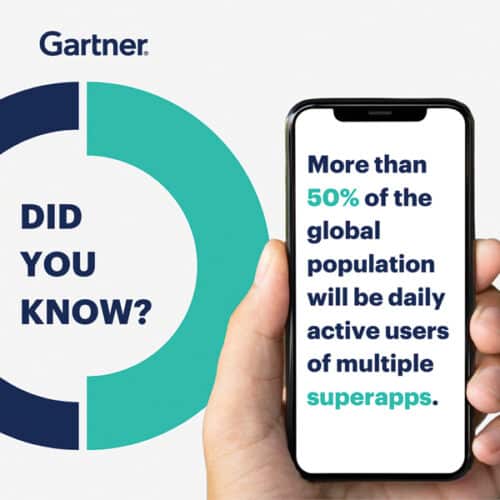We have been writing about emerging technologies all year long. Which of these will matter to you in 2023?
Start of a new year is always an exciting time. It holds a lot of promise—and a lot of surprises too! The world of tech is no different. At the start of each year, trend watchers all over the world get busy predicting the fate of emerging technologies. Here is our list of technologies that experts feel we must watch in 2023.

Quantum computing
Quantum leaps, that is what we saw in the past year, in quantum computing. And the trend is set to continue. IBM recently unveiled its new 433-qubit Osprey processor, more than tripling the computing capacity of its predecessor, Eagle. The 1,121-qubit Condor processor is slated for release this year. They are also developing ways to link processors together into a modular system capable of scaling without physical limitations.
Interestingly, companies are also looking beyond superconducting qubits, and other hardware platforms for quantum computing, like ion-traps, cold atoms, and photonic cluster states are also gaining traction. These are very different approaches, and according to experts we interviewed, they have the potential to yield application-specific quantum processing units (QPUs) in the near term. QCI, IonQ, Xanadu, and Honeywell have all developed quantum processors with such alternative technologies.
Interestingly, quantum computing is also getting democratised with such computing resources being available as-a-service through easy-to-use platforms that even those without deep knowledge of quantum information science can use to solve complex mathematical challenges. Development in quantum technology will lead to fantastic leaps in fields like materials engineering, drug discovery, understanding of chemical processes (battery development), climate modelling, financial analysis, and cryptography (security).
Metaverse
The metaverse is a hot buzzword today, and everyone is talking about this virtual, parallel universe, and what it is capable of achieving—a thorough merging of the physical and virtual worlds with people seamlessly travelling through these two realms, collaborating with people across the globe, conducting meetings, trainings, research, events, and sales through their avatars, and so on and so forth. This kind of full-fledged adoption seems implausible right now. But the fact is that precursor technologies to the metaverse are developing very, very fast. Super-powerful graphics processing units (GPUs), artificial intelligence (AI), cloud platforms, virtual reality (VR) and augmented reality (AR) glasses, high-bandwidth low-latency 5G networks, blockchain technology and decentralised finance (DeFi) are all developing in tandem, accelerating the evolution of this new virtual world.
Interestingly, the metaverse is not just a gamer’s paradise. We also see myriad companies, ranging from automakers and banks to hospitals and auctioneers developing their virtual spaces, as a means of engaging with the new generation of tech-savvy customers, to showcase their products and services, and to even sell virtual merchandise. Brands (including celebrities) are selling collectibles in the form of non-fungible tokens (NFTs), which enthusiasts are buying eagerly, hoping to rake in money as their value increases in the future.
On the other hand, several industries including manufacturing, pharmaceuticals, logistics, etc are beginning to use metaverse technologies to improve training, collaboration, supply chain and assembly line monitoring and optimisation, and so on. This application, known as the industrial metaverse, is expected to gain a lot of traction this year.

Digital twins
Digital twin technology is emerging as a key aspect of Industry 4.0. It is one of the components of the industrial metaverse, which is ‘here and now.’ With several cloud platforms available for the same, from companies like Microsoft and Nvidia, it is becoming possible for firms small and large to adopt this interesting technology.
A digital twin is basically a virtual representation of a physical entity—could be a component, an asset, a system or a process. It generally covers the entire lifecycle of the entity, and represents its current state, which is the main differentiator here. The digital twin could be just software, or also include a 2D or 3D visual representation of the entity. It is empowered with real-time information from the physical entity. So, essentially, the three aspects of this technology are: a physical entity equipped with sensors, a virtual representation of the same, and real-time data exchange between the two.
With advances in edge computing, companies are now beginning to interlink digital twins to get an enterprise-wide picture, which will empower them to optimise their systems and processes and make better decisions.
Cobots and autonomous delivery systems
Cobots or collaborative robots are basically robots that are safe to interact with people, in close proximity. They are not bulky, super powerful robots that have to be confined to cages in the shop floor. They are sweet, friendly, AI-powered robots that can work along with human workers, to increase their efficiency. Cobots are becoming increasingly popular across industries to deliver food in restaurants, to assist doctors and caregivers at hospitals (digital nurses), to move goods on a factory floor, to relieve human workers of repetitive and unergonomic tasks, and so on. Universal Robots, ABB and Fanuc are some of the leading international players in this almost-mainstream technology, while Systemantics is a completely indigenous maker of collaborative robots.
Although not developing as fast as cobots, autonomous delivery is another interesting tech to watch this year. Autonomous delivery systems are small, electric-powered motorised vehicles, which can deliver goods to people autonomously. There have been trials using four-wheeled robots and drones. They are generally lightweight with soft, rounded edges, and all the works to ensure that they cause no harm even if they accidentally bump into humans or animals. They will carry packages to be delivered within digitally-locked containers. A user must enter a one-time-password or some other means of authentication to open the container and collect the package.

We have been reading about autonomous cars and trucks for a long time now but, honestly, it is not clear when we will really see one on the roads of an Indian city! However, as a spin-off of the research in artificial intelligence, sensors, Internet of Things (IoT), lidar, and other component technologies, as well as fundamental research in applied math and computer science, we can expect to see autonomous delivery systems in the near future. Initially, we can only expect to see localised autonomous delivery systems, perhaps within a factory or a university campus. There have been some initial setbacks, as we can deduce from the likes of Amazon and FedEx scaling back their autonomous delivery programs. But several companies are still working on the tech—such as Starship Technologies, Nuro, and Robby Technologies—and market reports suggest that the industry is still on a growth trajectory. According to a report by Fortune Business Insights, the global autonomous last mile delivery market size is projected to grow from $11.12 billion in 2021 to $51.38 billion in 2028, at a compound annual growth rate (CAGR) of 24.4% during forecast period. One of the key drivers for pursuing this technology is the need felt for such systems during the Covid pandemic.
Cobots and autonomous delivery systems are interesting technologies to watch, because they work alongside humans, with no intention to replace them! This is reason enough for them to succeed.
Ubiquitous AI
Artificial intelligence is in a really advanced state now. We know it sits in the highest places—from airplanes and race cars to medical equipment and robots. But, according to a Forbes trendwatcher, the interesting trend we are going to see in 2023 is ‘AI Everywhere.’ With the emergence of no-code AI platforms and with boundless computing power available as-a-service, more and more people are beginning to use AI to run their businesses better. Earlier, only AI experts could develop AI applications, but now domain experts can do it themselves without any complex code. Some apps like Sway.ai use a drag-and-drop interface, while others like Akkio use a wizard based one.
Some of the trending no-code AI apps today are MonkeyLearn, Levity AI, obviously.ai, sway.ai, Akkio, NoCode.ai, Google AutoML, Juji, Lobe.ai, and Microsoft Power Platform, among others. Businesses across the world are using no-code AI platforms in interesting ways—such as for watching bees in farms to prevent deadly pest attacks, in autonomous shopping systems, and more.
Web3
Web3, long touted to be a better version of the internet, is slowly coming of age, as we see many of its components coming into mainstream use. According to Ethereum, where the concept originated in 2014, “Web3 has become a catch-all term for the vision of a new, better internet. At its core, Web3 uses blockchains, cryptocurrencies, and NFTs to give power back to the users in the form of ownership. A 2020 post on Twitter said it best: Web1 was read-only, Web2 is read-write, Web3 will be read-write-own.” It centres around the concept of decentralisation, giving ownership to users, rather than power being concentrated in the hands of a few powerful organisations.
With companies creating more decentralised products and services, blockchain technology is expected to gain momentum this year. The development of more sustainable and energy-efficient proof-of-stake blockchain technologies as a replacement for the earlier energy-intensive proof-of-work ones is also fuelling its growth. NFTs are bound to grow—as the means of interacting with many digital products and services, and as an accepted form of contracts, such as NFT concert tickets, or NFTs as ‘certificates’ to prove ownership of rare physical objects. Web3 also boasts of financial freedom. DeFi enables anyone to engage in financial activities. Web3 predominantly uses cryptocurrencies, although digital equivalents of fiat currencies are also being slowly integrated.
Observability and the digital immune system
Application performance monitoring (APM) is slowly giving way to ‘observability,’ Monitoring helps you watch a system’s performance—based on pre-defined metrics and logs—to detect known failures. That does not sound so smart in this age of AI, right? On the other hand, observability is all about anticipating problems, understanding their root causes, and actively debugging them.
According to data platform Splunk, “A system is considered ‘observable’ if the current state can be estimated by only using information from outputs, namely sensor data. While it might seem like a recent buzzword, the term originated decades ago with control theory (which is about describing and understanding self-regulating systems). However, it has increasingly been applied to improving the performance of distributed IT systems.”
APM cannot keep pace with the increased use of agile development, DevOps, microservices, multiple programming languages, serverless and other cloud-native technologies. It is very difficult to trace a problem to its origin in such distributed systems. Teams need to understand not just one application but the full picture, including its many interdependencies, in order to proactively identify and fix potential problems. Observability platforms and tools like IBM Instana Observability, Splunk, Datadog, Dynatrace, New Relic, and OpenTelemetry enable them to do this.
Observability is a crucial aspect of the emerging concept of digital immune system (DIS). According to Gartner, the DIS approach includes practices and technologies for software design, development, automation, operation, and analytics, and uses these to create a superior user experience and to reduce system failures that impact business performance. DISs interlink practices from the areas of observability, software testing, chaos engineering, site reliability engineering, and supply chain security of applications.

Superapps
In a Gartner blog, contributor Lori Perri compares a superapp to a Swiss knife, as it comprises a range of component tools (miniapps) that the user can use and remove as needed. A superapp provides end-users with core functionality or features, along with access to independently-developed mini-apps. At a simple plane, you can look at it as a single portal, which hosts multiple miniapps covering various aspects like messaging, collaboration, payments, etc. Users can pick and choose the miniapps they want and get a consolidated, seamless view of these, somewhat like their personalised platform.
Gartner estimates that 15 popular superapps have been downloaded more than 4.6 billion times around the world, with 2.68 billion monthly active users. It predicts that, by 2027, more than 50% of the global population will be daily active users of multiple superapps, and that the superapp concept will also expand to include enterprise mobile and desktop experiences, such as workflow, collaboration, and messaging platforms.
The term superapp was first used to refer to WeChat, and later included other platforms like Alipay, Grab, Gojek, Rappi, and Snapp. Now, enterprises like Walmart and Uber are building their own superapps for their employees, partners, vendors, and customers.
Several Indian conglomerates like the Adani group, Reliance Industries, the Tata group, Paytm, Amazon India, and Flipkart are also attempting to build superapps, but, according to Inc42, “They are building large digital ecosystems with multiple services, but so far, no one has been able to position itself as the go-to platform commanding maximum stickiness.”
Perhaps they will benefit from this piece of advice from Garter’s Top Strategic Technology Trends for 2023: “Offer an easy developer experience and convenient developer tools (such as APIs, design guidelines, software development kits, and frameworks) for partners to build, test, register, and submit miniapps for potential monetization.”
Platform engineering
Platform engineering is an emerging approach to improve developer productivity by providing them with reusable, self-service solutions (tools and processes) to produce good software with least overheads. The idea it to build an internal developer platform (IDP) that covers all the operational necessities across an application’s lifecycle, with the aim of reducing a developer’s headache!
“Platform engineering emerged in response to the increasing complexity of modern software architectures. Today, non-expert end users are often asked to operate an assembly of complicated arcane services,” said Paul Delory, VP Analyst at Gartner, in a blog post. “To help end users, and reduce friction for the valuable work they do, forward-thinking companies have begun to build operating platforms that sit between the end user and the backing services on which they rely.”
Github explains that, “Although some would argue a platform engineer is just another name for a site reliability engineer, the advent of complex new technologies—including Kubernetes, microservices, containers, and cloud orchestration—have pushed some companies to create a platform engineering team (or teams) charged with overseeing the platforms and the related technologies. In general, a platform engineer’s role is to help developers get software out the door more quickly and with security in mind.”
Gartner expects that by 2026, 80% of software engineering organisations will establish platform teams as internal providers of reusable services, components, and tools for application delivery, and that platform engineering will ultimately solve the central problem of cooperation between software developers and operators.
Gartner expects that by 2026, 80% of software engineering organisations will establish platform teams as internal providers of reusable services, components and tools for application delivery.
Green and sustainable tech
With the climate crisis looming large, there is a lot of urgency to reduce carbon emissions. The world is also facing a major energy crisis as an outcome of the Russia-Ukraine war. This is leading companies to think about greenness and sustainability. They are exploring clean and sustainable sources like green hydrogen and decentralised power grids (distributed energy generation). They are experimenting with eco-friendly materials, doing everything they can to reduce the energy consumed by every component of a device. There is so much going on that we cannot fit it in this small space.
But… it is not enough if companies or tech makers alone think about this. To create any real impact, tech users must also think about this.
While power consumption of gadgets is the most evident aspect that most of us tend to think of, there is more to the sustainability puzzle. Have you thought of the rare minerals and natural resources used to manufacture components like silicon chips? Do you realise that most of your favourite cloud services run on large data centres that guzzle energy? When we say cloud services, we are not speaking of enterprise apps, but almost all the common apps you use, including Netflix and Spotify! So, almost every time you use an app of your phone or computer (even the search engine!), it is consuming energy. We know the tech companies will not like this, but let us request you, at the cusp of a new year, to pause for a moment and think about this the next time you pointlessly browse on your phone just to kill time, or change a properly functioning gadget just for kicks!
Janani G. Vikram is a freelance writer based in Chennai, who loves to write on emerging technologies and Indian culture. She believes in relishing every moment of life, as happy memories are the best savings for the future












